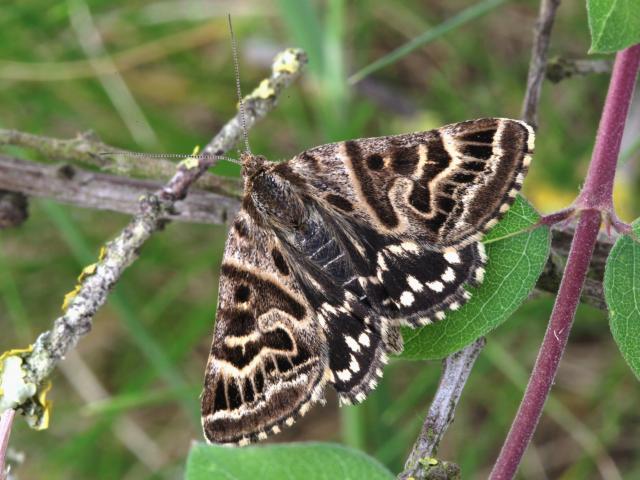
Mother Shipton
Found in Britain and Ireland but becoming increasingly rare. Grey-brown wings with mottled brown markings and two rows of small white spots. A small butterfly with a low, darting flight. Grizzled Skipper is similar in size but has brighter black and white markings.
In the sunshine, the Dingy Skipper often basks on bare ground with wings spread wide. In dull weather, and at night, it perches on the tops of dead flowerheads in a moth-like fashion with wings curved in a position not seen in any other British butterfly. This small brown and grey butterfly is extremely well camouflaged. It may be confused with the Grizzled Skipper, the Mother Shipton moth and Burnet Companion moth, which sometimes occur on the same sites at the same time.
The Dingy Skipper is locally distributed throughout Britain and Ireland but has declined seriously in recent years.
Common Bird’s-foot-trefoil (Lotus corniculatus) is the usual foodplant in all habitats. Horseshoe Vetch (Hippocrepis comosa) is also used on calcareous soils, and Greater Bird’s-foot-trefoil (L. pedunculatus) is used on heavier soils.

Colonies occur in a wide range of open, sunny habitats including chalk downland, woodland rides and clearings, coastal habitats such as dunes and undercliffs, heathland, old quarries, railway lines and waste ground.
Suitable conditions occur where foodplants grow in a sparse sward, often with patches of bare ground in a sunny, sheltered situation. Taller vegetation is also required for shelter and roosting.
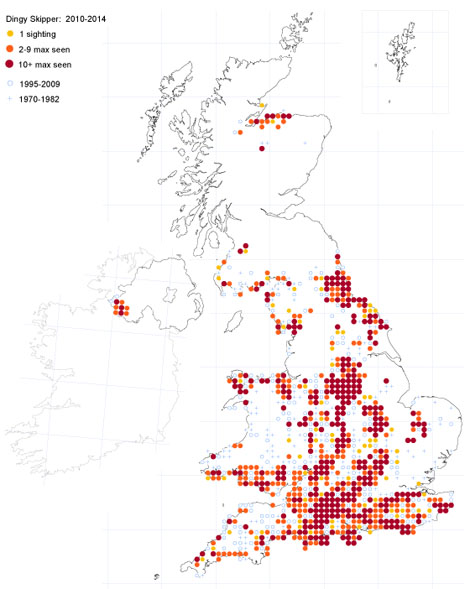
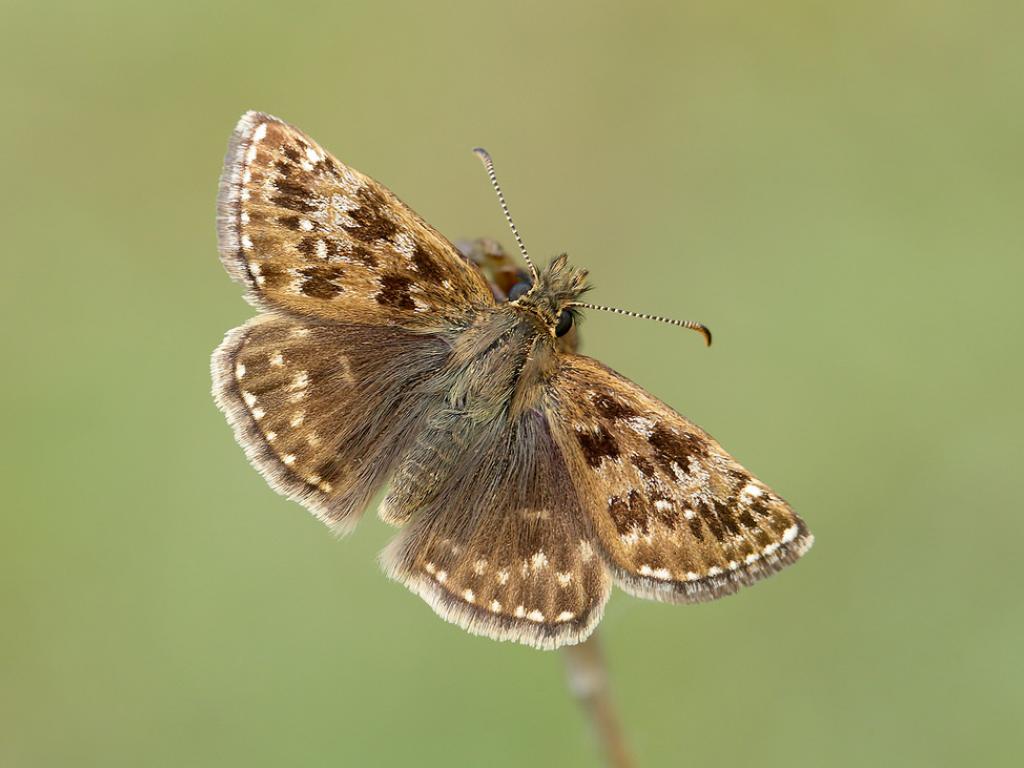
Dingy Skipper (upperside) - Iain Leach
Iain Leach
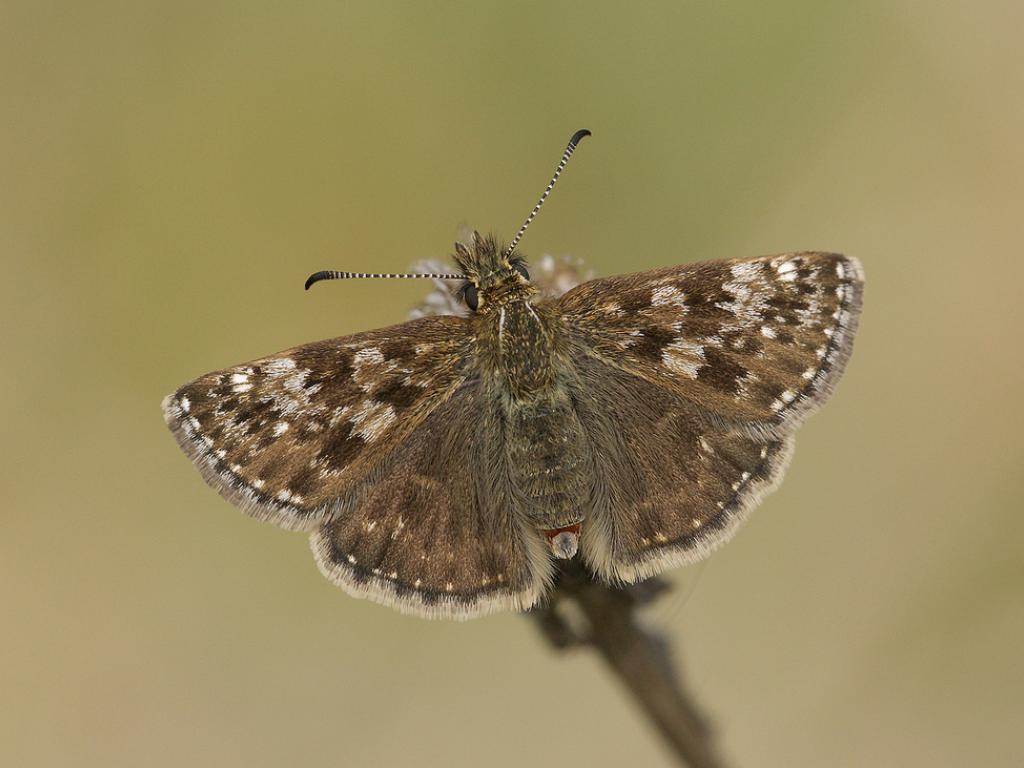
Iain Leach
Iain Leach
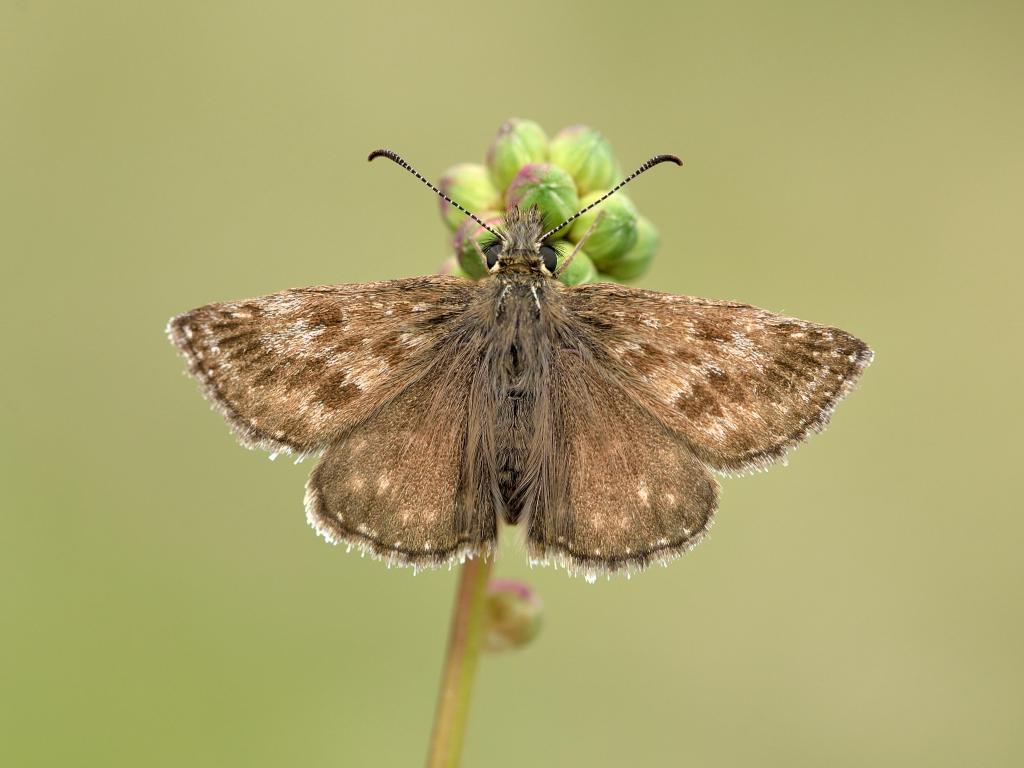
Dingy Skipper (upperside) - Bob Eade
Bob Eade
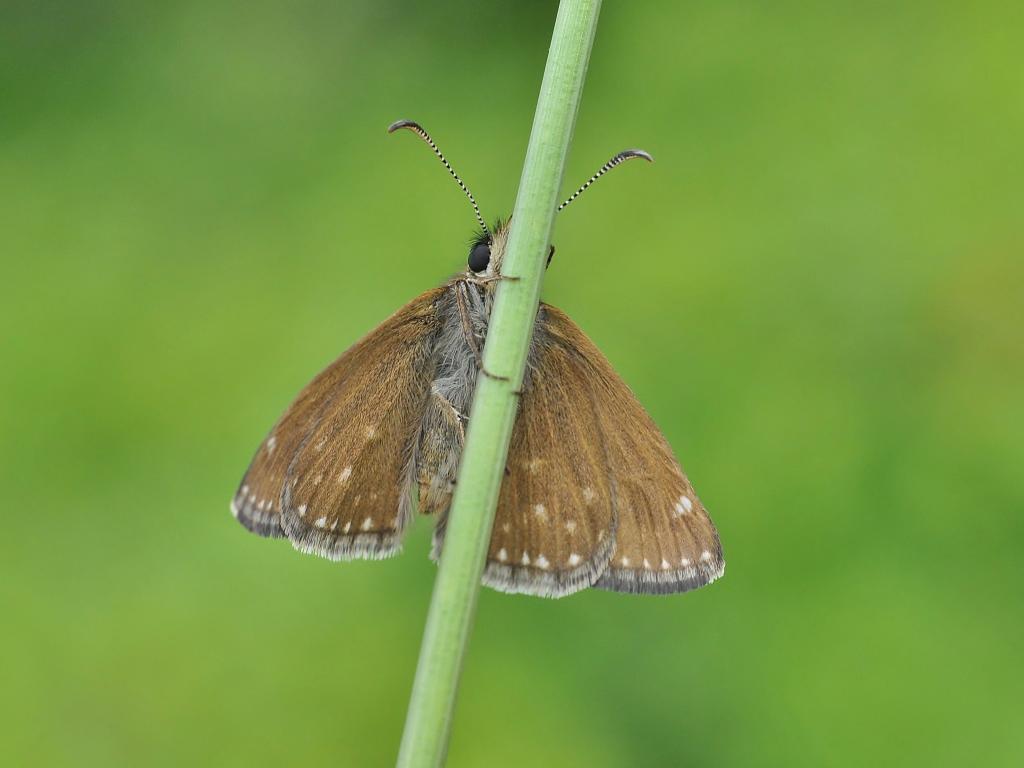
Dingy Skipper (underside) - Bob Eade
Bob Eade
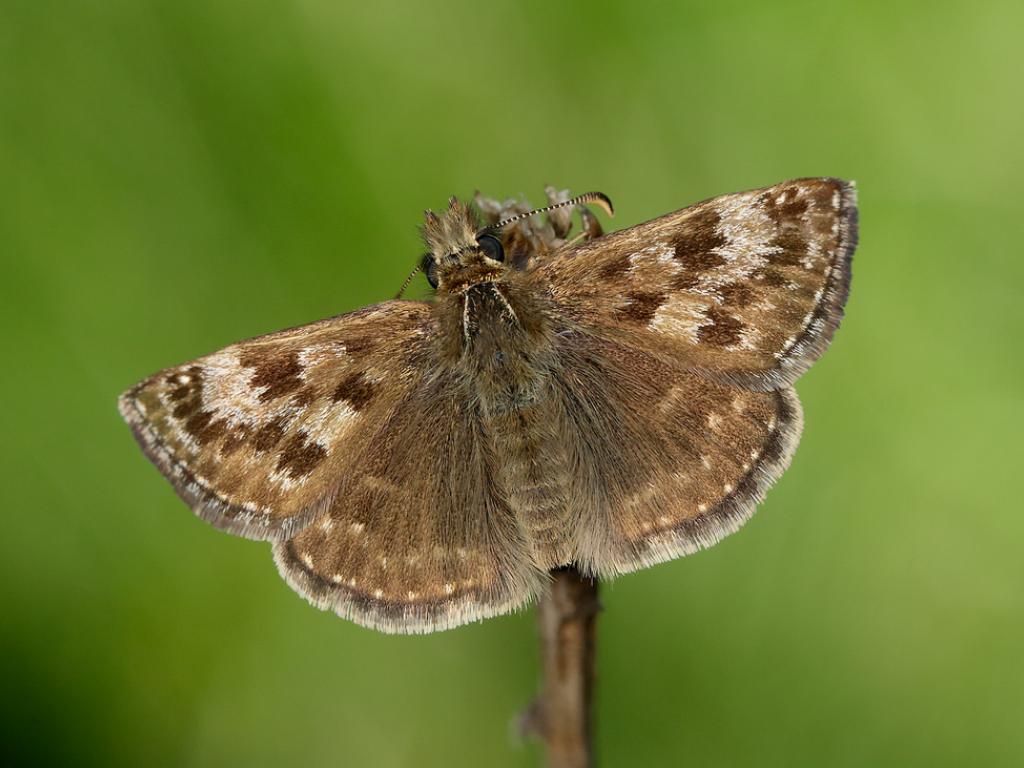
Iain Leach
Iain Leach
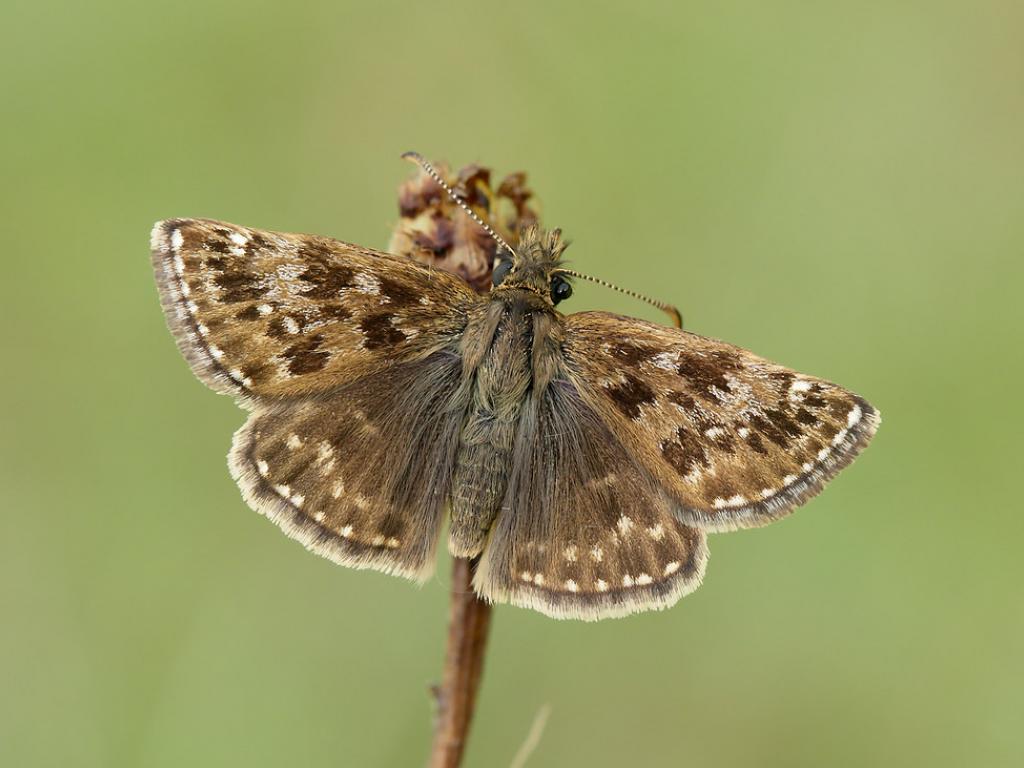
Dingy Skipper (upperwing) - Iain Leach
Iain Leach
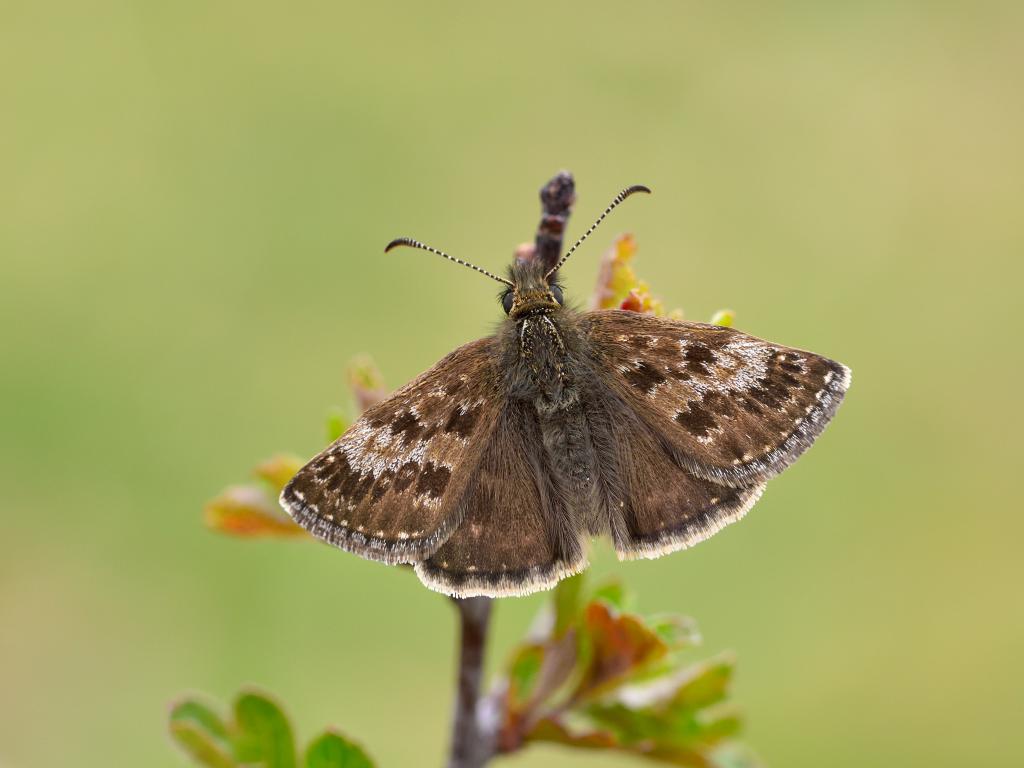
Dingy Skipper (upperwing) - Bob Eade
Bob Eade
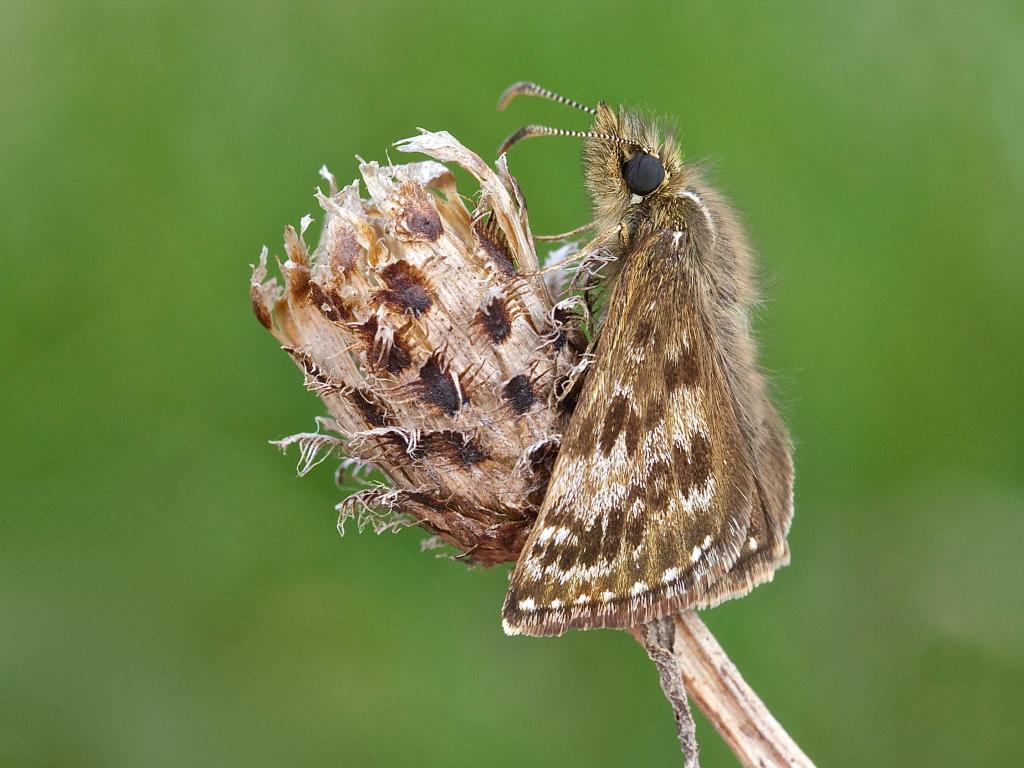
Dingy Skipper (roosting) - John Murray
John Murray
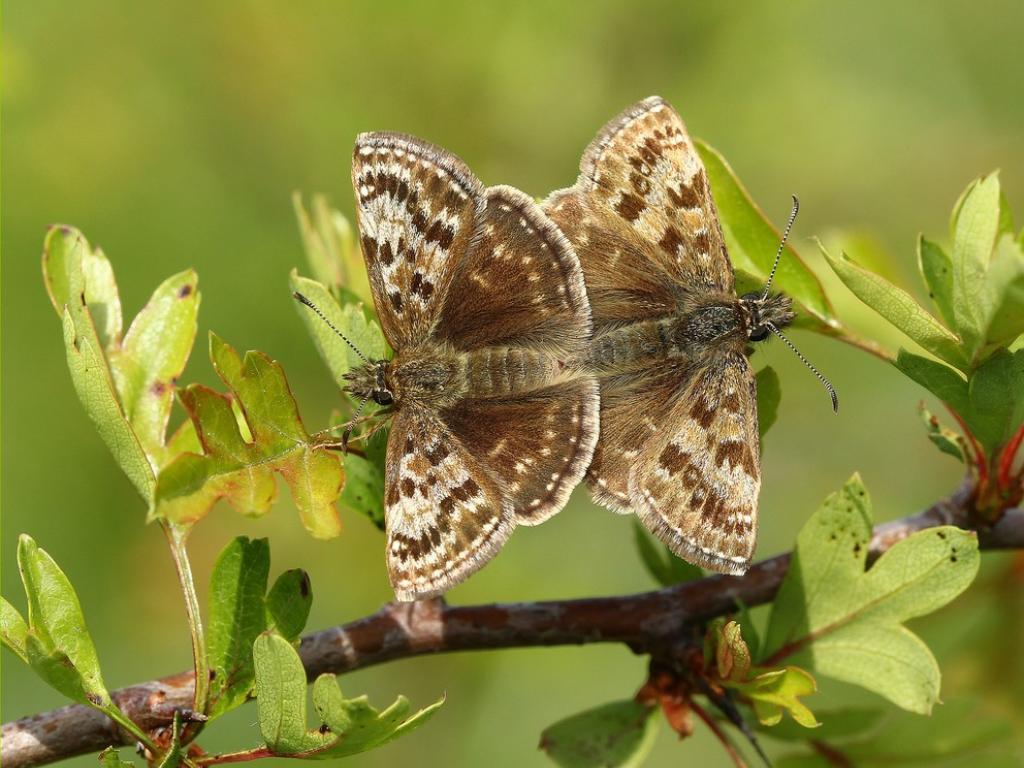
Edmund Kennerley
Edmund Kennerley
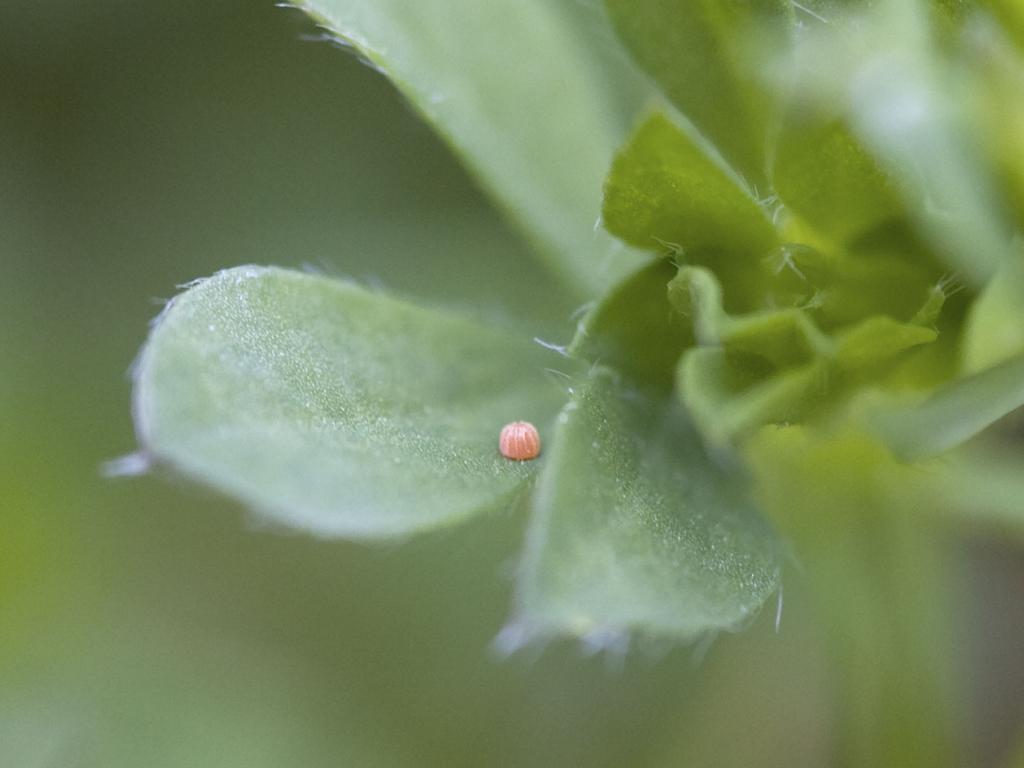
Keith Warmington
Keith Warmington
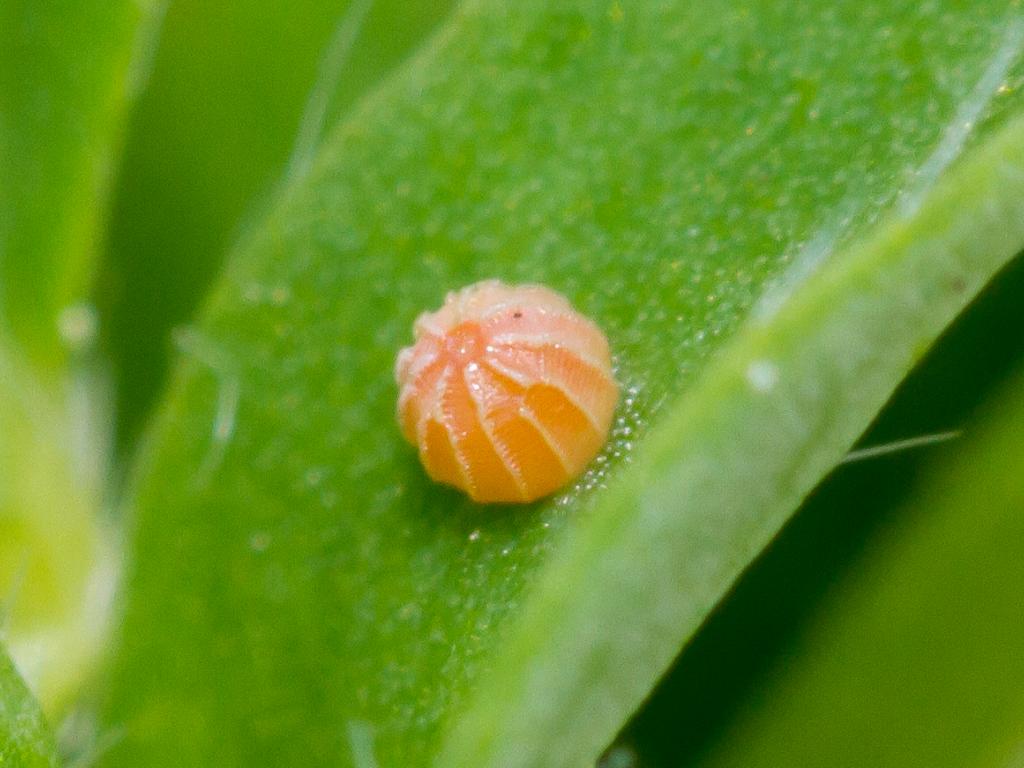
Dingy Skipper (egg) - Peter Eeles
Peter Eeles
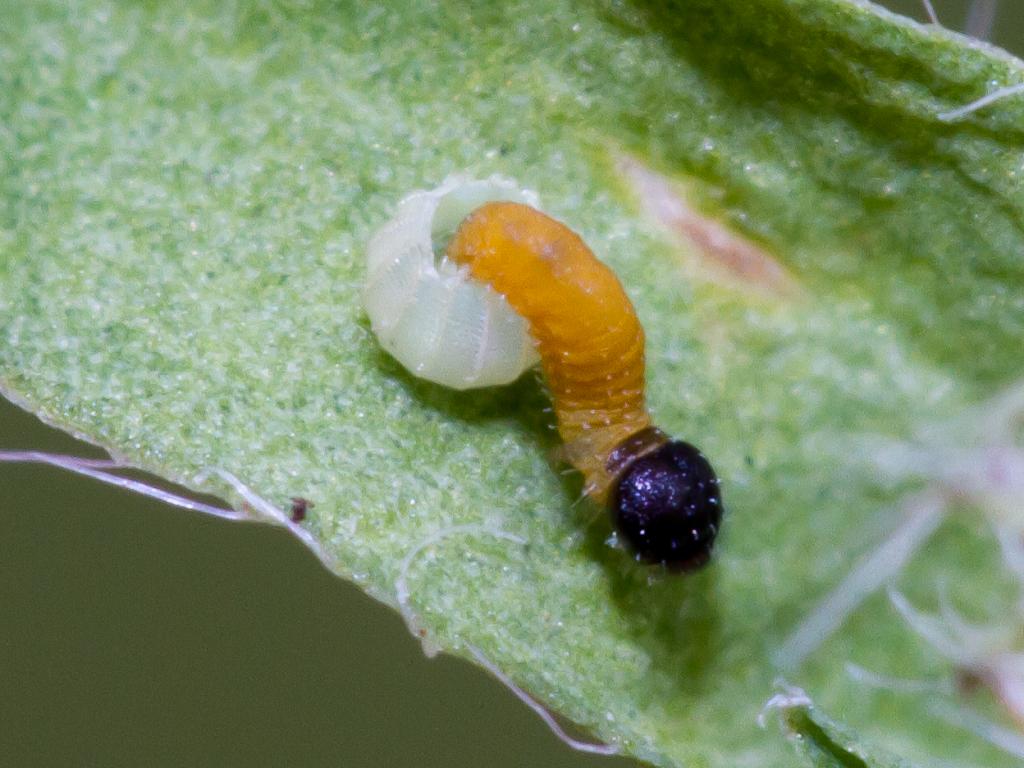
Dingy Skipper (caterpillar) - Peter Eeles
Peter Eeles